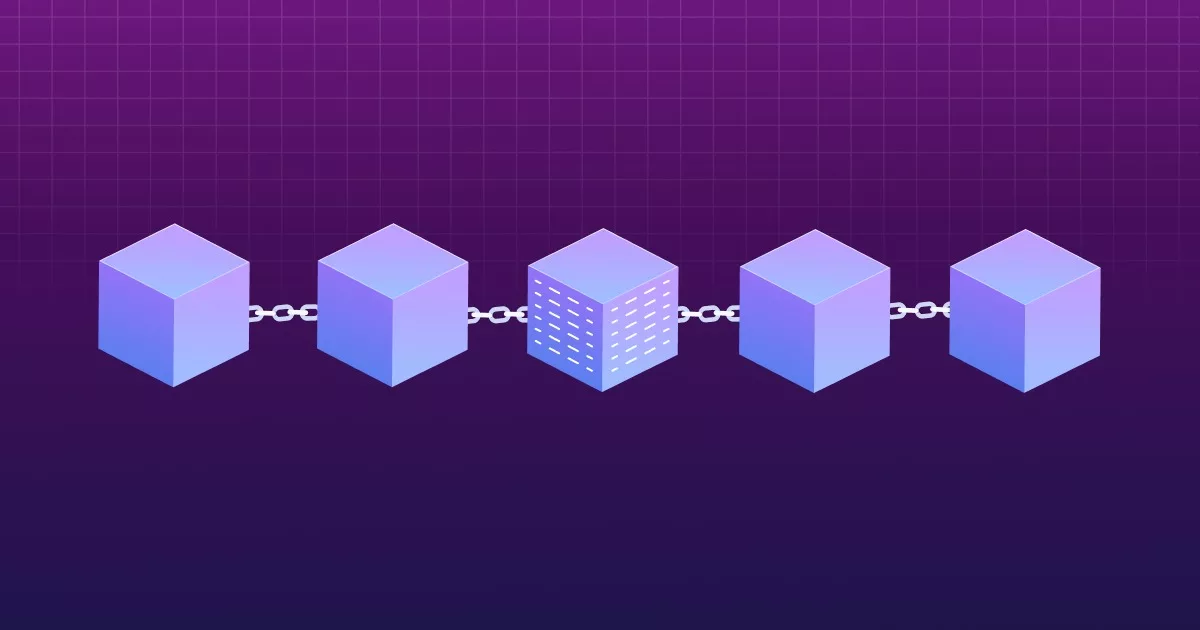
In recent years, blockchain technology has gained widespread attention for its potential to revolutionize various industries. Central to the power of blockchain is its immutability, which ensures that no one can tamper with or alter data stored on the blockchain.
But what exactly makes blockchain immutable? How can a decentralized ledger that is constantly updating ensure the integrity and trustworthiness of its data?
This article will explore the key factors contributing to blockchain immutability and examine how they work together to make blockchain one of the most secure and trustworthy technologies available today.
What Is Blockchain?
Blockchain is a distributed ledger that allows people to make secure and transparent transactions without the need for intermediaries like banks.
Instead of relying on a centralized authority to track transactions, a computer network collectively maintains and verifies the blockchain.
Each block in the chain contains a record of several transactions. Each block is cryptographically linked to the previous one. This creates an unbreakable chain of blocks.
Blockchain comes with great features, including decentralization, immutability, efficiency, and smart contracts. Out of these features, immutability is a key enabler that ensures the network’s security, trust, transparency, and accountability, making it a promising technology for a wide range of applications.
How is Immutability achieved in Blockchain?
Immutability in blockchain comes through the use of complex cryptography and consensus algorithms.
When blockchain records a transaction, a network of nodes verifies it using a consensus algorithm, such as Proof of Work (PoW) or Proof of Stake (PoS).
Once they verify the transaction, they add it to a block cryptographically linked to the previous block, creating an unbreakable chain of blocks or a blockchain.
Each block contains a unique code, a hash generated using transaction data, and a cryptographic function. The hash serves as a digital fingerprint of the block, and any change to the data in the block would result in a different hash value. If someone tries to alter a blockchain transaction, the hash of the block containing that transaction will change, breaking the chain of blocks and making the alteration evident.
Also, most blockchain designs focus on decentralization. It means no central authority controls the network. Instead, the network of nodes works together to validate and add transactions to the blockchain, making it more resistant to attacks or attempts to alter the data.
Consensus Mechanism + Cryptography + Decentralization = Blockchain Immutability
Benefits of Blockchain Immutability
The immutability of blockchain technology offers several powerful benefits.
Once a blockchain records data, it cannot alter or delete it without leaving a permanent and transparent record of the change. This provides high transparency and accountability, making it a powerful tool for auditing and regulatory compliance.
Also, the immutability of blockchain technology enables new possibilities for secure and tamper-proof transactions. This is particularly useful in financial transactions, where the risk of fraud or double-spending is high. Using blockchain, you can securely record and validate transactions, ensuring they are tamper-proof and irreversible.
The immutability of blockchain also offers a high degree of resilience against security threats. As blockchain data is decentralized and distributed across a network of nodes, it is much more difficult to manipulate than data stored on a centralized server.
Myths related to Blockchain Immutability
There are two prevalent myths surrounding the capabilities of blockchain immutability.
1. Immutability equates to Data Integrity
People generally assume that immutability makes the data reliable. However, blockchain is not a magic wand that automatically makes data truthful.
Immutability prevents bad actors from tampering with data after a node feeds it into the blockchain network. But it has no control over the data before it enters the network.
Let’s say the data is fed to the blockchain network via oracles. Various factors, such as network latency, data validation errors, and hardware failures, can impact the accuracy and reliability of the data provided by oracles.
Thus, taking additional measures, such as sharing the hash outputs with stakeholders, is essential. This adds a layer of validation to ensure that the data on the blockchain is accurate and reliable.
2. Data in a Blockchain Network can’t be manipulated
It’s inaccurate to say that no one can manipulate blockchain networks. It is possible but not easy. It requires collusion between parties and a complete recalculation of the cryptographic hashes. In the case of a public blockchain like Bitcoin, both tasks are incredibly difficult and resource-intensive.
To manipulate data on a blockchain, colluding parties need to coordinate their efforts and gain control of a majority of the computing power on the network. This is a “51% attack” and is no small feat. The cost of such an attack would be astronomical, making it an improbable scenario.
While tampering with data on a blockchain is theoretically possible, it’s a highly unlikely scenario due to the significant cost and effort required. This is one of the many reasons a blockchain is a powerful tool for ensuring data integrity and trust.
Applications of Blockchain Immutability
Blockchain immutability has numerous real-world applications beyond cryptocurrency.
Some of the most promising applications include:
1. Supply Chain Management
Blockchain immutability can create a transparent and auditable supply chain, ensuring that tracking and authentication of goods take place at every stage of the production process. This can help reduce fraud, improve accountability, and increase efficiency.
2. Digital Identity
Blockchain immutability can create secure and tamper-proof digital identities, enabling more secure and efficient verification processes. This can revolutionize everything from banking to healthcare, making verifying identity and authenticating transactions easier and more secure.
3. Voting Systems
Blockchain immutability can create transparent and tamper-proof voting systems, enabling more secure and auditable elections. This can help reduce fraud and increase trust in the democratic process.
4. Healthcare
Blockchain immutability helps store and share medical records securely and privately. It enables better care coordination and more accurate diagnosis and treatment.
5. Intellectual Property
Blockchain immutability can securely store and verify intellectual property ownership, reducing the risk of piracy and ensuring that creators are properly compensated for their work.
Conclusion
The immutability of blockchain is a fundamental aspect of its design.
It provides many benefits, from increased transparency and accountability to improved security and resilience.
This immutability is achieved through cryptographic hashing, decentralized networks, and consensus mechanisms that work together to ensure the integrity and trustworthiness of the data stored on the blockchain.
As blockchain continues to gain momentum across various industries, its immutability will only become more critical, enabling new possibilities for secure and tamper-proof transactions, auditable supply chains, and more.
FAQs
1. What does it mean when a blockchain is immutable?
Immutability in blockchain refers to the property of data stored on a blockchain that cannot be altered, deleted, or tampered with once it has been added.
This is achieved through cryptographic hashing and a decentralized network that stores a copy of the blockchain on each participating node.
2. How does consensus contribute to blockchain immutability?
Consensus is a key factor in ensuring blockchain immutability. It is the process by which the nodes on the network agree on the validity of new transactions and blocks before they are added to the blockchain.
This ensures that any attempt to tamper with the blockchain requires the collusion of a majority of the nodes on the network, making it extremely difficult to achieve.
3. Can blockchain ever be hacked or altered?
While blockchain is highly resistant to hacking and tampering, it is not completely immune.
A determined attacker with significant computing power could perform a 51% attack on a blockchain, enabling them to control the network and potentially alter it.
But, such an attack is highly unlikely due to the significant cost and effort required.
4. What are some real-world applications of blockchain immutability beyond cryptocurrency?
Blockchain immutability has numerous real-world applications beyond cryptocurrency.
For example,
- It can securely store and share medical records
- It can provide a transparent and auditable supply chain for food or pharmaceuticals
- It ensures the integrity of voting systems
- It enables more secure and efficient verification processes




